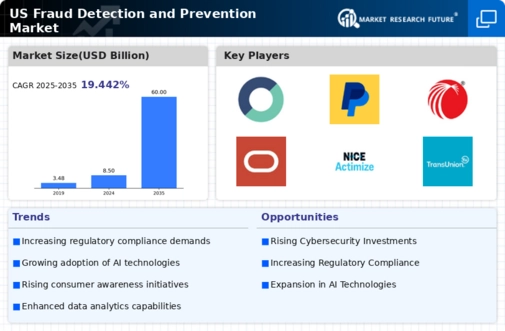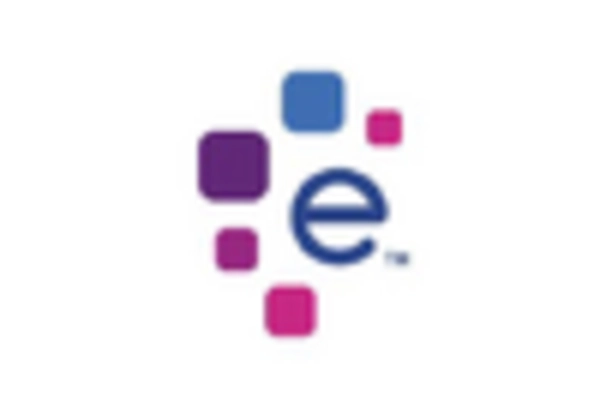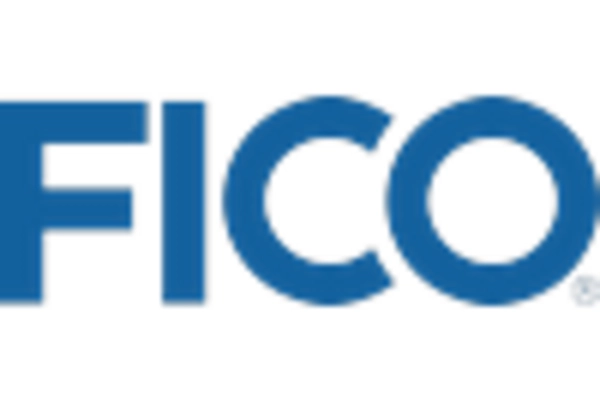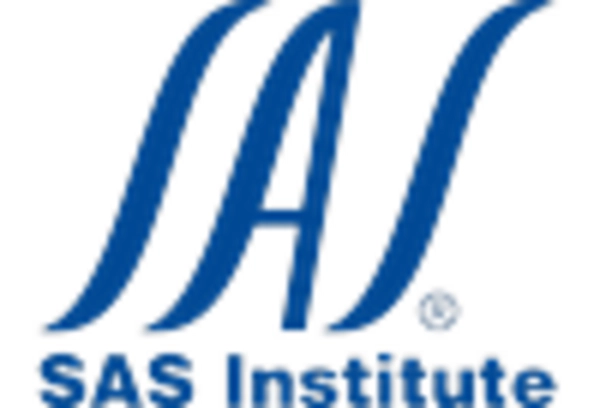Regulatory Pressures
Regulatory pressures are a significant driver for the fraud detection-prevention market. As governments implement stricter regulations to combat fraud, organizations are compelled to adopt comprehensive fraud detection solutions. In 2025, compliance with regulations such as the Payment Card Industry Data Security Standard (PCI DSS) is expected to drive a 20% increase in market demand. Companies that fail to comply may face severe penalties, further incentivizing investment in fraud prevention technologies. This regulatory landscape creates a fertile environment for growth in the fraud detection-prevention market, as businesses seek to align with legal requirements while protecting their interests.
Advancements in Technology
Technological advancements play a crucial role in shaping the fraud detection-prevention market. The integration of artificial intelligence (AI) and machine learning (ML) into fraud detection systems enhances their effectiveness by enabling real-time analysis of vast amounts of data. In 2025, the market is projected to reach $30 billion, driven by these technological innovations. Companies are increasingly leveraging AI and ML to identify patterns and anomalies that may indicate fraudulent activity. This trend indicates a shift towards more proactive and intelligent fraud prevention strategies, which are essential for staying ahead of increasingly sophisticated fraudsters.
Rising Cybersecurity Threats
The increasing sophistication of cyber threats is a primary driver for the fraud detection-prevention market. As organizations face a surge in cyberattacks, the need for robust fraud detection solutions becomes paramount. In 2025, it is estimated that cybercrime will cost businesses over $10 trillion annually, highlighting the urgency for effective prevention measures. Companies are investing heavily in advanced technologies to combat these threats, leading to a projected growth rate of 15% in the fraud detection-prevention market. This trend indicates that businesses are prioritizing security investments to safeguard their assets and maintain consumer trust.
Evolving Consumer Expectations
Consumer expectations are evolving rapidly, with individuals demanding more secure and seamless transactions. The fraud detection-prevention market is responding to this shift by developing solutions that enhance user experience while ensuring security. In 2025, approximately 70% of consumers express a preference for businesses that utilize advanced fraud detection technologies. This trend suggests that organizations must adapt to meet these expectations or risk losing customers. As a result, the market is likely to see an increase in the adoption of innovative solutions that balance security with convenience, driving further growth in the industry.
Increased Digital Transactions
The rise in digital transactions is a key factor influencing the fraud detection-prevention market. As more consumers and businesses shift towards online platforms for transactions, the potential for fraud increases. In 2025, it is estimated that digital payment transactions will exceed $10 trillion in the US alone, creating a pressing need for effective fraud detection solutions. This surge in digital activity is likely to drive a 25% growth in the market, as organizations invest in technologies to mitigate risks associated with online transactions. The fraud detection-prevention market is thus positioned to benefit from this trend, as businesses prioritize security in their digital operations.

















Leave a Comment